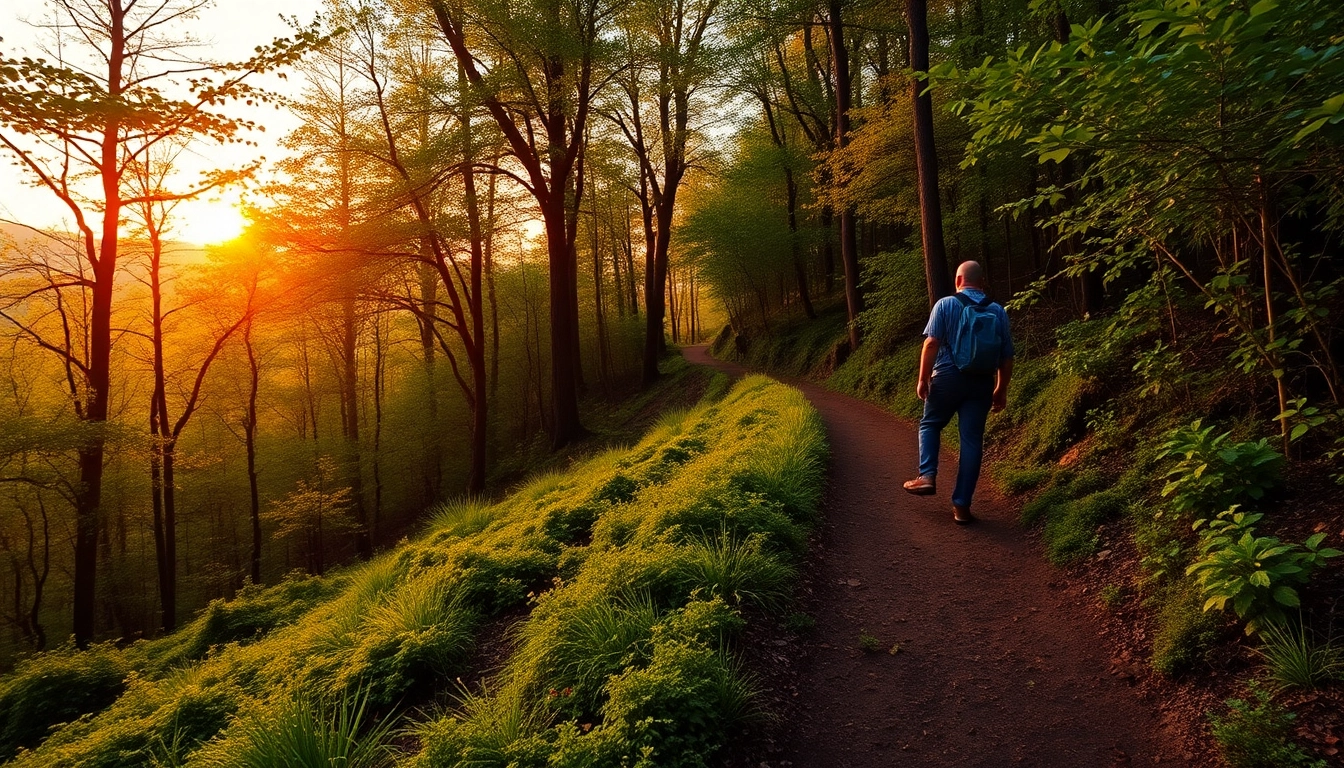Understanding Hiking: Definitions and Types
What Is a Hike? Clarifying the Term
The term hike has evolved over centuries from describing casual walks to encompass a wide range of outdoor activities involving varying terrains and intensities. At its core, a hike is fundamentally a long, vigorous walk, usually undertaken on trails or footpaths in natural settings, often for recreation, exercise, or mental rejuvenation. According to Wikipedia, hiking developed in Europe during the eighteenth century as a leisure activity that allowed individuals to enjoy nature while engaging in physical activity. Today, hiking is recognized globally as a popular outdoor pursuit that combines physical fitness with immersive natural experiences.
When considering the modern definition, it’s important to distinguish it from simply walking or strolling. Hiking typically involves sustained effort over an extended period, often in remote or less-developed areas, which can include forests, mountains, hills, or rugged terrains. Its appeal lies not only in physical health benefits but also in mental stress relief, exploration, and cultural discovery.
Different Types of Hikes: Casual, Trekking, and Mountain
Hiking is a diverse activity, and its classification depends on factors such as distance, terrain, duration, and purpose. Understanding these distinctions helps enthusiasts select suitable adventures based on skill levels and interests.
- Casual Hiking: This type of hike is characterized by short distances on well-maintained trails, often in parks or designated recreation areas. It’s perfect for beginners or families seeking a relaxed outdoor experience. Casual hikes typically last a few hours and require minimal gear.
- Trekking: Trekking involves longer, often multi-day journeys through more remote or challenging terrains. Popular in regions like the Himalayas or the Andes, trekking requires planning, specialized gear, and physical endurance. It often includes camping and navigating through diverse environments, providing a profound connection with nature and local cultures.
- Mountain Hiking: Mountain hiking emphasizes ascents and descents in mountainous terrains, demanding higher levels of fitness, technical skills, and safety awareness. It includes activities like alpine hiking and summit attempts, often requiring knowledge of navigation and weather conditions.
Each type of hike offers unique experiences. Casual hikes provide relaxation and accessibility, trekking offers adventure and cultural insights, and mountain hikes challenge physical limits while rewarding hikers with breathtaking panoramic views.
Key Differences Between a Hike and a Walk
While the terms hike and walk are often used interchangeably, they embody distinct activities. According to Dictionary.com, a hike typically involves traveling a greater distance or navigating more challenging terrains, often for exercise or pleasure in natural outdoor environments. In contrast, a walk generally refers to a short, leisurely stroll on flat, well-maintained paths like sidewalks or park trails.
For example, walking might involve a casual walk through a city park, whereas hiking could mean trekking through rugged mountain trails that require stamina and navigation skills. The physical effort involved in hiking is usually markedly higher, often demanding proper preparation, gear, and safety considerations.
Understanding this distinction helps outdoor enthusiasts set realistic expectations and choose appropriate activities aligned with their experience levels and safety requirements.
Preparing for Your First Hiking Adventure
Choosing the Right Hiking Trails and Destinations
Selecting the appropriate trail or destination is crucial for a successful first hike. Factors to consider include your fitness level, available time, preferred scenery, and accessibility. For beginners, local parks and nature reserves with well-marked, easy routes are recommended. Websites, guidebooks, and mobile apps can help identify trails suited to your skill level and interest.
For those seeking more adventure, destinations like mountain ranges, national parks, or remote wilderness areas offer diverse landscapes. It’s advisable to research trail conditions, restrictions, and whether permits are required in advance.
For instance, if you are exploring Indonesia, considering scenic spots in Lombok such as Mount Rinjani or Rinjani National Park presents rewarding yet manageable challenges for newcomers.
Essential Gear and Clothing for a Safe Hike
Preparing appropriate gear is vital for comfort and safety. Basic essentials include sturdy hiking shoes that provide ankle support and grip, moisture-wicking clothing suitable for weather conditions, and lightweight layers for temperature regulation. Additionally, a daypack containing water, snacks, a first aid kit, and sun protection is indispensable.
Technical gear such as trekking poles, navigation tools (compass, GPS device, or smartphone with offline maps), and emergency shelter should be added for more serious hikes. It’s crucial to select gear based on the specific environment; for tropical Indonesia, breathable fabrics and insect repellent are also recommended.
Investing in quality gear enhances durability, safety, and enjoyment during hikes. Brands specializing in outdoor equipment should be prioritized to ensure reliability.
Planning Your Route and Safety Measures
Detailed route planning minimizes risks and maximizes enjoyment. Use maps and GPS for navigation, identify landmarks, and establish checkpoints. Sharing your planned route with friends or family is a prudent safety step.
Consider weather forecasts, trail difficulty, and your physical readiness. Always carry a communication device, such as a fully charged mobile phone or satellite communicator if venturing into remote areas.
Familiarize yourself with Leave No Trace principles: pack out all trash, respect wildlife, avoid disturbing flora, and stay on designated trails to preserve natural habitats.
Hiking Techniques and Best Practices
Proper Trail Movement and Pace Management
Maintaining an efficient and safe pace is fundamental. Beginners should start with a moderate tempo, allowing for regular breaks and hydration. Use your arms for balance on uneven terrain, and choose steps suited to your stride and terrain type.
Conserve energy by walking smartly: avoid overexertion, especially on uphill sections, and listen to your body. Proper footwear and posture can prevent common injuries such as blisters, strains, or fatigue.
Navigation Skills and Using Maps or GPS
Navigational competence is essential. Learning how to read topographical maps, interpret trail markers, and operate GPS devices reduces disorientation risks. Always carry backup navigation methods, such as a compass, in case electronic devices fail.
Practice using these tools in familiar environments before heading into remote areas. Knowing your location and planned route enhances confidence and safety.
Environmental Respect and Leave No Trace Principles
Responsible hiking involves protecting the environment for future generations. Adopt Leave No Trace guidelines: dispose of waste properly, minimize campfire impact, respect wildlife and other hikers, and avoid picking plants or disturbing habitats.
Your mindful actions preserve the beauty and integrity of natural areas, ensuring that hiking remains a sustainable activity enjoyed by all.
Maximizing Benefits and Overcoming Challenges
Health Benefits of Regular Hiking
Consistent hiking offers a wide array of physical and mental health advantages. It improves cardiovascular health, enhances muscular strength, and boosts endurance. The weight-bearing nature of hiking helps strengthen bones and joints.
Additionally, outdoor exposure reduces stress, anxiety, and depression, fostering mental clarity and emotional resilience. Studies reveal that spending time in nature accelerates recovery from mental fatigue and enhances mood.
Overcoming Common Hiking Obstacles
New hikers often encounter challenges such as fatigue, weather fluctuations, or navigation uncertainties. Preparation and knowledge mitigate these issues:
- Fatigue: Build endurance gradually, and incorporate rest breaks.
- Weather: Pack appropriate clothing, and monitor forecasts to avoid dangerous conditions.
- Navigation: Always carry reliable maps and tools, and stay on marked trails.
Facing setbacks proactively enables you to adapt and continue your outdoor exploration safely.
Tracking Progress and Setting Personal Goals
Monitoring your hikes through GPS logs, journal entries, or fitness apps helps track improvements and identify areas for growth. Setting SMART (Specific, Measurable, Achievable, Relevant, Time-bound) goals—such as increasing daily distance or conquering higher elevations—provides motivation.
Regular reflection on achievements fuels enthusiasm and enhances skill development, turning hiking into a rewarding personal journey.
Advanced Tips for Enthusiasts
Multi-Day Hikes and Backpacking Essentials
Embarking on multi-day hikes or backpacking trips necessitates meticulous planning. Essential considerations include selecting appropriate gear, arranging food supplies and water purification, and planning camp sites. A lightweight tent, sleeping system, and cooking equipment are vital investments for comfort and safety.
Training physically by doing shorter hikes with a loaded pack helps prepare for the added burden. Understanding weather patterns and local regulations ensures a smooth experience.
Hiking in Different Seasons and Conditions
Each season presents unique challenges and opportunities. Spring offers blooming flora and manageable weather, but be wary of muddy trails. Summer entails longer daylight but requires sun protection and hydration. Autumn provides stunning foliage, while winter demands specialized gear like crampons, microspikes, or insulated clothing.
Adapting to seasonal conditions enhances safety and enjoyment. Always check trail closures or advisories before heading out.
Joining Hiking Communities and Events
Connecting with local or online hiking groups expands your social network, provides safety and motivation, and enriches your experiences. Participating in organized hikes, conservation projects, or overnight trips introduces you to new trails and techniques.
Platforms like Meetup or dedicated outdoor forums help locate events suited to your interests and skill levels.
Engaging with communities fosters a shared passion and promotes responsible outdoor recreation.

